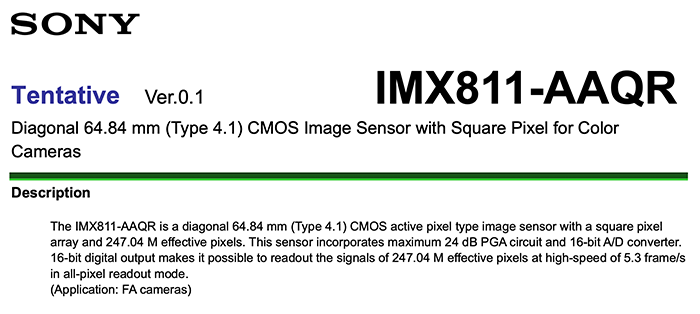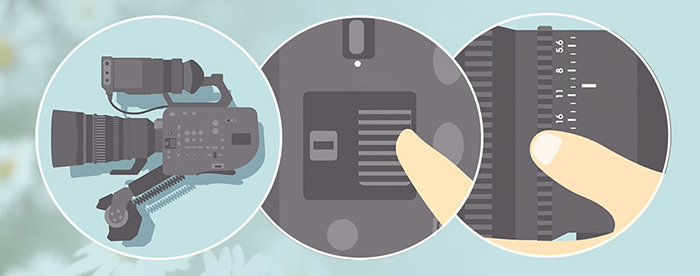100mm STF Lens in Africa by Jonathan Stewart

This is a guest post from Jonathan Stewart. He used the new Sony 100mm STF for these shots. Lens store links: [shopcountry 60274].
100mm STF Lens in Africa
Sony’s 100mm f/2.8 STF lens has scarcely been out two months and it’s already been overshadowed by the remarkable A9, and the two new wide angle zooms. Yet despite this prompt relegation to the far end of the release treadmill, the unique qualities of the 100 STF make it one of Sony’s most remarkable E-mount releases to date.
Keeping with Sony’s pricing trends, the lens comes in at $1500, the most “affordable” in the G Master lineup, $300 less than the other G-Master prime, the 85mm f/1.4, which is also the best benchmark by which to judge the 100 STF.

Sony Pro Support USA, the best $100 photography investment you can make, lent me an evaluation copy for my trip to Namibia, Africa, in May and June of this year. I’m lucky enough to be able to travel the world, co-leading photography tours with my business partner, some Youtuber guy you’ve probably never heard of. Not only is it a great pleasure to be able to go to all these places and meet locals and our extraordinary guests, but the trips are a great way to put gear through extreme torture tests. Having the benefit of the Pro Support evaluation copies on these trips is invaluable, and I can’t wait to test the A9 and 16-35mm G-Master on our next outing.
The 100 STF is one of only a handful of APD lenses on the market. Fuji has the 56mm f/1.2 APD, which was the first auto-focus apodized lens (also priced at $1500). Neither Nikon nor Canon currently offer APD lenses, although the latter holds several patents, including most recently for a 135mm f/2 APD lens.
Much has already been written about what an apodization filter (APD) lens is, so briefly, an APD lens has a filter element, visible when looking into the lens, that gradually darkens towards the edges. This reduces the intensity of the diffracted light, rendering the out-of-focus areas (aka “bokeh”) smoother. The effect of the filter is eliminated beyond f/8, because by that point, only light that passes through the clear, center portion of the lens enters through the narrower iris, rendering all those expensive optics moot.


At maximum aperture of f/2.8, the lens registers in the camera and in the metadata as f/5.6, which is the T-value, yet Sony decided to display that as the aperture value as well. What this means is that the unique qualities of this lens are only available from (displayed) f/5.6 to f/8 — one stop, more on that later. What’s unknown to me, and maybe an informed reader can explain, is how or whether Sony switches back to F-value beyond f/8 on this lens, or if this lens only really displays T-values all the way up to the minimum of f/22.
So, how does it perform?
It feels slightly lighter and a bit more comfortable to hold than the 85mm GM lens, and features all the same buttons and dials, with the addition of a macro switch (more on that below). Focus performance is roughly the same as the 85 GM, and I noticed no disturbing AF noises. It does have optical image stabilization, which somewhat, but not completely, mitigates the lower T-values.

Sony markets the G-Master lineup as super sharp and in that regard the 100 doesn’t disappoint. To my eye, it’s close to, if not just as sharp as the 85mm GM. Like the 85mm GM, the 100 STF achieves this sharpness without the clinical harshness present in some other lenses, making it a great choice for portraiture.


So what about that bokeh? Rough bokeh is caused by diffracted light passing through the lens and aperture to the sensor. The more this light is corrected for, the smoother the bokeh, but there are limits. The usual way to reduce this diffracted light is to correct it, or collimate it, utilizing the refractive index of different and exotic (and heavy – think Otus) glass elements, thus rendering aberrations and distortions to a minimum. Another way is to simply eliminate, rather than correct, the stray photons by filtering them through the apodizing element. This reduces the light that approaches the aperture at an oblique angle while letting the collimated (parallel) light pass unfiltered through the center portion. The tradeoff for removing rather than correcting the diffracted light is the lower T-value, since a significant portion of light, about two stops, is sucked up by the filter element.
Most of the images I took with the lens were wide open, at f/5.6, but as I mentioned above, they’re really at f/2.8 physically. This means that the depth of field is f/2.8, while the exposure value is f/5.6. But because of the filter, the out-of-focus areas look extremely blown out, much more so than any other 100mm f/2.8 lens. Having the relatively deeper depth of field of an f/2.8 lens while at the same time having the blur of an f/1.4 (or faster) lens is the main reason to consider buying the 100 STF. This means that you can focus on an eye, and get at least part of the cheek or nose in focus as well. And if you miss focus slightly and get the cheek or nose, the forgiving nature of this lens means there’s a good chance the eye will still be acceptably sharp. You can’t do that with an f/1.4.

So what’s the downside, and why am I not going to buy this lens? Bottom line, for my use, the 100 STF is a one-trick pony. The STF feature is only available for the one stop between f/5.6 and f/8, and beyond that there’s no difference between this lens and any other 100mm lens stopped down. Photos taken with your travel zoom will look more or less the same at f/9.
So when buying this lens, you’re buying it exclusively because you want that totally blown out look. The following two pictures were taken at f/8, and as can be seen, the background is still very much (and very beautifully) blurred.

At f/8, the center sharpness is even better:

Despite all this wondefulness, I won’t be buying this lens because to me, that total blur doesn’t fit my style. Yes, it’s beautifully rendered from a photography nerd’s point of view, but with the 100 STF, your story-telling flexibility is hindered. With a traditional fast lens, you can micro-adjust your background blur to emphasize or de-emphasize the surroundings as your style dictates. With this lens, you’re locked into mega-blowout, all the time.
But it shoots macro as well, you say?


Yes, it does, but it’s not a true macro, with only a 0.25 magnification ratio (as opposed to 1:1 for a true macro). So really, it’s more of a close-up lens, with the minimum focus distance of just under two feet. The manual switch to select between regular and closeup is an unfortunate necessity, and if your subject just happens to be right at the boundary between the two zones, hitting that sweet spot can be annoying as you switch back and forth, especially since the camera is unusable for a couple of moments after the dial is turned.
Bottom line, if I had an extra $1500 to spend on an optic that’s good for only one very specific thing, I would get this lens, because it does that thing better than any other lens on the market. The background blur is so creamy smooth, it looks much more like how the eye and mind naturally perceive out of focus areas, rather than what we’re used to seeing from all other camera lenses. The problem is, that’s all this lens does.
Because of the high T-value, you can’t shoot in low light without jacking up the ISO. Landscapes and stopped-down images at f/9 and above look the same through this lens as they would through any other, less-specialized and cheaper lens, so buying the lens for those purposes is overkill. And everyone who’s used an A7R2 at f/9 or above knows how auto focus can struggle.
Most of the time, I’m limited by space and weight (not to mention budget), thus emphasizing the value of versatility, which is why my 85mm GM is a much more useful lens for me than the 100 STF. If I were primarily a studio shooter, or wedding or event photographer, I would buy this lens in a heartbeat. For those applications, the look is going to blow the clients away and would definitely set the end product apart. Still, if you submitted a portfolio of photos that were all totally blown out, it would be rather boring. You’d need to mix up the looks with other lenses. A standard fast lens like the 85mm GM can do that all by itself, and while the bokeh doesn’t have that totally creamy quality, it’s still pretty spectacular, albeit in a more traditional way.
Despite the this lens not being for me, the very fact that Sony is willing to release such a specialized optic is awesome and speaks well to their willingness to take risks and give Sony users products that will set their photography apart. Nonetheless, at this still relatively early stage of FE-mount buildout, a fast 135mm would have seemed like the more obvious choice owing to its wider appeal.
Here’s a gallery of images used in this review. If you like my work, please also check out my YouTube channel. And if you’re interested in joining us on our next trip to Nepal, please check that out as well.





